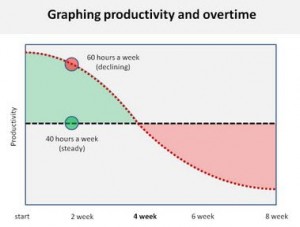One of the most important psychology experiments of all time was conducted by Yale Professor, Stanley Milgram. It is called the “obedience experiment” and was carried out in the 60’s. It was very controversial at the time for obvious reasons but it has implications for the way in which you present and position your business advisory services.
Milgram wanted to see whether people in authority would be able to influence human behavior under circumstances where that behavior would “normally” be considered reprehensible. To do that he asked 40 men recruited from newspaper ads as volunteers to participate in a “very important pioneering research project” (emphasizing the importance of the experiment to the subjects was a key part of it.)
The volunteers were required to ask a series of questions to another person who we will call the “student” and who was located in another room. The subject did not know that the “student” was a member of Milgram’s research team. The volunteers were supervised by a person who was dressed in a white Lab coat and smacked of great authority.
If the student got the answer wrong the volunteer pressed a button that administered an electric shock to the student. The shocks started at 30 volts and increased in 15 volt increments up to 450 volts. The switches were labeled “slight shock” up to “Danger: severe shock” and the last two switches were labeled “XXX”.
The volunteers were required to continue to shock the students with increasing intensity as they got more questions wrong. As the voltage was increased the students would start to scream out in pain and ate 300 volts, bang on the door to be released and finally beyond that shock level there was silence suggesting to the volunteer that the student was either dead or unconscious.
If a volunteer wanted to abandon the experiment the supervisor would respond with four sequential instructions:
- Please go on.
- The experiment requires that you to continue.
- It’s absolutely essential that you continue.
- You have no other choice, you must continue.
What Milgram discovered is that despite expressing concern when students “screamed in agony”, 65% of volunteers still inflicted the maximum voltage. But, and here’s the kicker, when the volunteers were given the last prod – i.e. “you have no choice … ” not one of them continued.
Milgram’s experiment has been replicated in various forms many times so there is very strong support for the conclusion that people will voluntarily tend to do what they are told by someone in authority if they believe it is a worthwhile cause as long as they believe they have a choice.
This is an important finding for many aspects of interpersonal behavior not the least of which is the area of “selling” business development services. The process I engaged in when in practice to position our business development services is called an Initial Consultation – not a very original name I admit and it probably should be called an Initial Conversation because everything starts with a conversation.
I was unaware of Milgram’s work at the time but I now understand why certain certain elements of the process actually worked. They are firstly, I always positioned myself as someone who had “authority” to successfully help a client achieve the results we posited – to do that you simply need to exhibit considerable passion and confidence.
Secondly, I always had a “gut” feeling that what clients want is a sense of control over their lives, their business and the process we were talking about. That’s why certain key elements of the process are so important to its success. For example, a key element of the Initial Consultation is The Mutual Commitment Statement, the last point of which deals with a Referral System (but it’s actually a sales system in drag) says “you will give consideration to referring us to at least two other people who you believe would benefit from the work we do.”
 The conversation that takes place around that starts with “….. the results we get when doing this with clients are such that they often tell us they’re glad we’re not working with their competitors … so we have decided to give you control over who we work with by asking you to identify or future clients …. etc.” That is a powerful sales statement, believe me!
The conversation that takes place around that starts with “….. the results we get when doing this with clients are such that they often tell us they’re glad we’re not working with their competitors … so we have decided to give you control over who we work with by asking you to identify or future clients …. etc.” That is a powerful sales statement, believe me!
Furthermore, the process gives us “authority” that comes from the confidence that “… the results we get for you will drive the future of our business.” One way to look at that is “you (the client) will play a large part in our destiny as well as yours” which is another way of giving your client a sense of control.
Finally, a critical component of our business development solution is the provision of a Management Control Plan. Clients who want to run a better business have an acute sense of the need for them to have more control over the business. This simple binder is a no-brainer way to show them that this is a logical outcome of the process.


